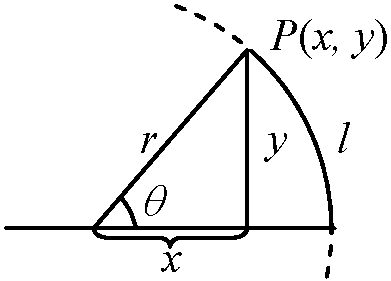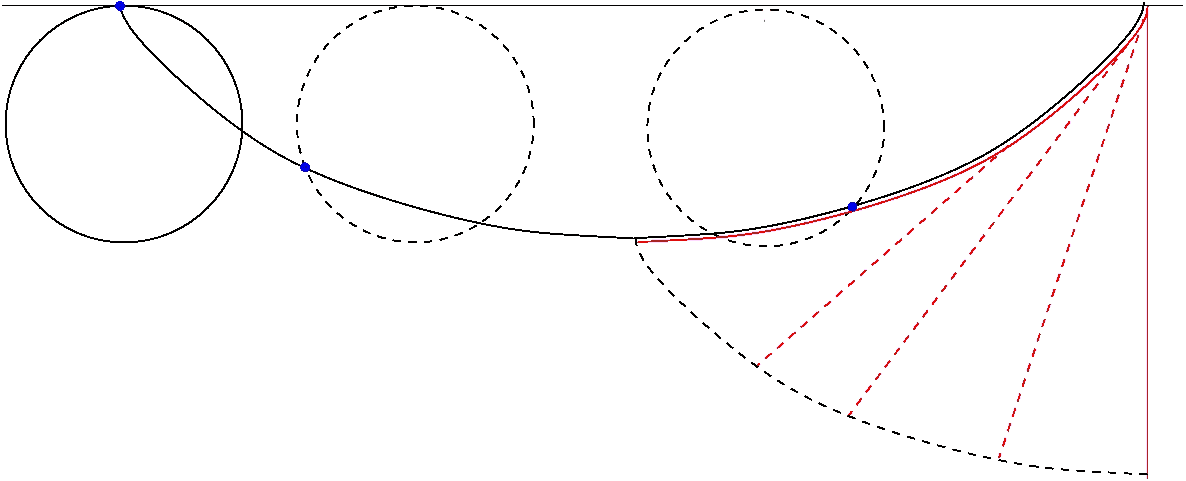(Upload on April 29 2016) [ 日本語 | English ]
Mount Usu / Sarobetsu post-mined peatland
From left: Crater basin in 1986 and 2006. Cottongrass / Daylily
HOME > Lecture catalog / Research summary > Glossary > Mathematics
|
Gr. μαθημα. Engl. Mathematics
(History of Natural sciences) HistoryThree Greek geometric problems (ギリシア幾何学三大問題)a set of geometric problems whose solution was sought using only compass and straightedge:
Fibonacci (alias), Leonardo da Pisa 1170-1250 "Liber Abaci": introduced Indian-Arabic mathematics, numeration, calculation, etc. Descartes René 1596-1650: founder of analytic geometryTartaglia-Cardano: solution of third degree equation or cubic equation Tartaglia, Niccolò Fontana (1499/1500-1557) and Cardano, Gerolamo (1501-1576) Cardano–Tartaglia formula (= cubic equation): ax3 + bx2 + cx + d = 0 Oresme, Nicole 1323-1382: concept and symbol of power, n on anStifel, Michael 1486-1567: "Arithmetica integra" - concept of logarithm Ferrari, Lodovico 1522-1565: solution of biquadratic equation Gunter, Edmund 1581-1626: trigonometric function, logarithmic table invented Gunter rule (prototype of slide rule) Barrow Isaac 1630-1677: reverse tangent (逆接線) →find out the original curve by detecting the characteristics of tangent = the beginning of infinitesimal calculus Newton: differentiation (called fluxion at that time) and integrationLeibniz, Gottfried Wilhelm 1646-1716, Germany: competition to the priority of differential and integral calculus Bernoulli, Jacques 1654-1705: one of the Bernoulli Family1/12 + 1/22 + 1/32 + … → convergence Bernoulli, Jean 1667-1748: Farther of DanielBernoulli, Daniel 1700-1812, Switzerland (born in Holland) mathematics and physics Euler, Leonhard 1707-1783Alembert (d'), Jean Le Rond 1717-1783, France, mathematics, physics and enlightenment: edited Encyclopedie universelle des arts et sciences (百科全書) with Diderot, Denis (1713-1784) Laplace, Pierre Simon, Marquis de 1749-1827, France, mathematics, astronomy and physics (probability, equation and geodesy)left his name Laplace transformation or transform Gauss, Karl Friedrich 1777-1855, Germany: algebra, geometry, analysis
left his name gauss (G) on the electromagnetic unit (EMU), gauss |
[ calculus ] proposed the analytical theory of heat or thermodynamics (contributed the development of mathematical physics) Poisson, Simeon Denis 1781-1840, FranceProbability theory and static electromagnetics Poncelet, Jean Victor 1788-1867, France
Study on geometry when he was in jail because he became captive during joining an army for the conquest to Russia by Napoleon I 1831: complex number (複素数) Lobachevsky NI 1793-1856, Russia / Bolyai J 1802-1860, Hungary
Lobachevskian geometry → hyperbolic geometry Galois E (ガロア) 1811-1832 Research on the bacground of theory proposed by Abel → establishing group theory (群論) Riemann, Georg Friedrich Bolyai 1826-1866, GermanyNon-Euclidean axiom: no pararell lines exist Poincaré, Jules Henri 1854-1912, France: mathematics, physics and philosophy
Cousin of The president Poincaré R (1860-1934)
Prime number theorem (PNT) |
|
Def. Algebraic function (代数関数): a function defined as the root of a polynomial equation
= rational function (有理関数) + irrational function (無理関数) Transcendental function (超越関数)Elementary transcendental function (初等超越関数)function that is not algebraicEx. trigonometric function (f), exponent f, logarithmic f Elementary f = algebraic f + elementary transcendental fExponent function (指数関数)Law. exponential law (指数法則): b > 0, ax > 0 ⇒
axay = ax+y → ax/ay = ax-y Logarithmic function (対数関数)Def. Power function (冪関数)Ex. limx→∞(1 + a/x)x = eaPr. a/x = 1/y → (1 + a/x)x = (1+ 1/y)ay = ((1 + 1/y)y)a continuous
x → +∞, a > 0 → y → +∞, a < 0 → y → –∞ Def. Hyperbolic function (双曲線関数)x ∈ ℜ (-∞ < x < ∞) ⇒coshx = (ex + e-x)/2 (hyperbolic cosine 双曲線余弦) sinhx = (ex - e-x)/2 (hyperbolic sine 双曲線正弦) ⇒ graph: catenary (懸垂線) tanhx = sinhx/coshxcothx = coshx/sinhx sechx = 1/coshx coshx (or cosechx) = 1/sinhx ⇒ inverse hyperbolic function (逆双曲線関数) Prop. (1) cosh2x - sinh2x = 1
(2) tanhx = coshx/sinhx
sinh(x ± y) = sinhxcoshy ± coshxsinhy (4) limx→∞tanhx = 1, and limx→-∞tanhx = -1 Pr._(1) cosh2x - sinh2x = (coshx + sinhx)(coshx - sinhx) = ex·e-x = 1 //
(2) trivial //
= (ex + e-x)/2·(ey + e-y)/2 + (ex - e-x)/2·(ey - e-y)/2
(4) limx→∞tanhx = limx→∞((1 - e-2x)/(1 + e-2x)) = 1 Def. Trigonometric function (三角関数) sine (正弦): sinθ = y/r
sine (正弦): sinθ = y/rcosine (余弦): cosθ = x/r tangent (正接): tanθ = x/y = sinθ/cosθ cotangent (余接): cotθ = x/y, = 1/tanθ secant (正割): secθ = r/x, = 1/cosθ cosecant (余割): cosecθ = y/x = 1/sinθ tanθ = sinθ/cosθ, cotθ = cosθ/sinθ Cycle (周期): sinθ, cosθ, secθ, cosecθ → 2π, tanθ, cotθ → π → sin(π/2 – θ) = cosθ, cos(π/2 – θ) = sinθ, sinnπ = 0 limθ→0(sinθ/θ) = 1, |θ| ∠ 1 → sinθ ≈ θ sin(–θ) = –sinθ, cos(–θ) = cosθ, tan(–θ) = –tanθsin2θ + cos2θ = 1, 1 + tan2θ = sec2θ, 1 + cot2θ = cosec2θ Th. lim(sinx/x) = 1 Ex. lim(tanx/x) = lim(sinx/x)·(1/cosx) = 1 Ex. limsin(sinx)/x = lim(sin(sinx)/sinx)·(sinx/x) = 1·1 = 1 (∵ x → 0 ⇒ sinx → 0) |
Equations of trigonometric function
ΔABC, AB = a, BC = b, CA = c, ∠A, ∠B, ∠C ⇒ Th. sine theorem (正弦定理): a/sinA = b/sinB = c/sinC= 2R (R: radius of circumcircle) Th. cosine theorem (余弦定理)
a2 = b2 + c2 + bccosA
sin(x ± y) = sinxcosy ± cosxsiny
sin2x = 2sinxcosx
sin3x =3sinx – 4sin3x
sin2x/2 = (1 – cosx/2)
sinαcosβ = 1/2{sin(α + β) + sin(α – β)}
sinα + sinβ = 2sin((α + β)/2)cos((α – β)/2) Pr. ∀ε > 0, ∃δ > 0, |x – a| < δ → |sinx – sina| < ε
|sinx – sina| = |2sin((x – a)/2)·cos((x + a)/2)| < x – a < δ (= ε) asinθ + bcosθ = √(a2 + b2)·sin(θ + α) Here, α is obtained by: cosα = a/√(a2 + b2), sinα = b/√(a2 + b2) Pr. asinθ + bcosθ = √(a2 + b2)·((a/√(a2 + b2))·sinθ + (b/√(a2 + b2))·cosθ)= √(a2 + b2)·(cosαsinθ + sinαcosθ) = √(a2 + b2)·sin(θ + α) // _____________________from addition theorem Ax. t := tan(x/2) ⇒cosx = (1 - t2)/(1 + t2), sinx = 2t/(1 + t2), dx = 2/(1 + t2)·dt Pr. cos2(x/2) = 1/(1 + tan2(x/2)) = 1/(1 + t2)
From double-angle formula, = 2·1/(1 + t2)·t = 2t/(1 + t2)
t = tan(x/2), differentiate both sides Def. Inverse trigonometric function (逆三角関数)= cyclometric functionsin-1x = arcsinx: x = siny (-1 ≤ x ≤ +1) cos-1x = arccosx: x = cosy (-1 ≤ x ≤ +1) tan-1x = arctanx: x = tany (∀ℜ) cot-1x[-∞, +∞] = arccotx: x = coty (∀ℜ) sec-1x = arcsecx: x = secy (x ≤ -1 or 1 ≤ x) csc-1x = arccscx: x = cscy (x ≤ -1 or 1 ≤ x) Q. Solve (1) sin-1(1/2), (2) tan-1(-√3) and (3) sin-1(sin(3/5·π)) (-π/2 ≤ θ ≤ π/2) A._(1) θ := sin-1(1/2), sinθ = 1/2 ∴ θ = π/6 ∴ sin-1(1/2) = π/6__ (2) θ := tan-1(-√3), tanθ = -√3 ∴ θ = π/3 ∴ tan-1(-√3) = π/3 __ (3) θ := sin-1(sin(3/5·π)), sinθ = sin(3/5·π) ∴ θ = 2/5·π ∴ sin-1(sin(3/5·π)) = θ = 2/5·π |
|
1874 Cantor Georg (1845-1918): established set theory |
Law. Basic formulae (基本公式)Idempotent law (冪等法則)A∪A = A, A∩A = A Commutative law 交換法則A∪B = B∪A, A∩B = B∩A Distributive law (分配法則)
A∪(B∪C) = (A∪B)∪C
A∪(A∩B) = A (AC)C = A De Morgan's law (ド・モルガンの法則)
(A∪B)C = AC∩BC |
|
Def. Gauss notation (ガウス記号), [•]: x ⊂ ℜ, a ⊂ Z, a < x
⇒ max(a) ≡ [x] Ex. [-2] = -2, [π] = 3, [1 - √5] = -2Ax. ∀x ⇒ x - 1 < [x] or [x] ≤ x < [x] + 1 Ex. [2 + √5] + [2 - √5] = 4 + (-1) |
Fermat's Last Theorem (フェルマーの最終定理) 1670= Fermat's conjectureTh. No three positive integers a, b and c satisfy the equation an + bn = cn for any integer value of n greater than 2Prior to prove the theory: n = 1: a1 + b1 = c1 ⇒ a + b = c ⇒ infinite solution n = 2: a2 + b2 = c2 (≡ the Pythagorean theorem) ⇒ infinite solution Pr. Case. n = 3 (proven by Euler 1753) Case. n = 4 (proven by Fermat ≈1630) Case. n = 5 (proven by Dirichlet & Legendre 1825) Case. n = 7 (proven by Lamé 1839)
|
|
Concerned with shape, size, relative position of figures, and the properties of space Euclidean geometry (ユークリッド幾何学): the study of points, lines, shapes, figures and spaces based on the Euclidean five axioms
Plane geometry (平面幾何学) = two-dimensional Euclidean geometry |
Differential geometry (微分幾何学): using calculus and linear algebra to study problems in geometry Topology (位相幾何学, トポロジー): dealing with the properties of geometry that are unchanged by continuous function Algebraic geometry (代数幾何学): studies geometry through the use of multivariate polynomials and other algebraic techniques |
Euclid's five axioms (5公理)
Euclid's five postulates (5公準)
Trochoid (トロコイド)a roulette formed by a circle rolling along a line (s.l.), including curve and circle
x = aθ - bsinθ
L: a line (the circle center C moves parallel to L) |
Eepitrochoid (外トロコイド)/Hypotrochoid (内トロコイド)a roulette traced by a point attached to a circle of radius r rolling around the outside/inside of a fixed circle of radius R
Cycloid (サイクロイド)= common trochoid
If the cycloid has a cusp (尖点) at the origin and its humps are oriented upward, its parametric equation is:  Generation of the involute of the cycloid unwrapping a tense wire placed on half cycloid arc shown in red Astroid (アステロイド, 星芒形) = tetracuspid (四尖点形), cubocycloid, paracycle: a hypocycloid with four cusps If the radius of the fixed circle is a then the equation is given by:
x2/3 + y2/3 = a2/3 ⊂ superellipse
polar coordinates: r = a(1 + cosθ) S = 3/2·πa2, L = 8a Non-Euclidean geometry (非ユークリッド幾何学) Hyperbolic_______Euclidean_______Elliptic |
[ combination and permutation ]
|
a scalar that is computed from the elements of a square matrix and encodes certain properties of the linear transformation described by the matrix (linear albegra)
Expression: det(A), det A, or |A| |
Simultaneous equation (連立方程式)Q. Solve the simultaneous equations (1) and (2)(1) 7x – 4y = 3, -6x + 5y = -1 (2) ax + by + cz = 1, bx + cy + az = 1, cx + ay + bz = 1 A. (1) D2 =
D12 =
D13 = = ab + bc + ca - a2 - b2 - c2 a) a + b + c ≠ 0, a ≠ b ≠ c →
x = D13/D = 1/(a + b + c),
b) a + b + c = 0 → incompatible (不能) |
Two dimensions (二次元)1) Orthogonal coordinates (直交座標)2) Oblique coordinate (斜交座標) 3) Polar coordinate (極座標) Terms: coordinates 座標 axis (pl. axes) 軸 horizontal plane 水平面 horizontal axis 水平軸 hypotenuse 斜辺 normal line 法線 (adj. normal 法線、法線の) orthogonal 直角な parabola 放物線(放物線の) |